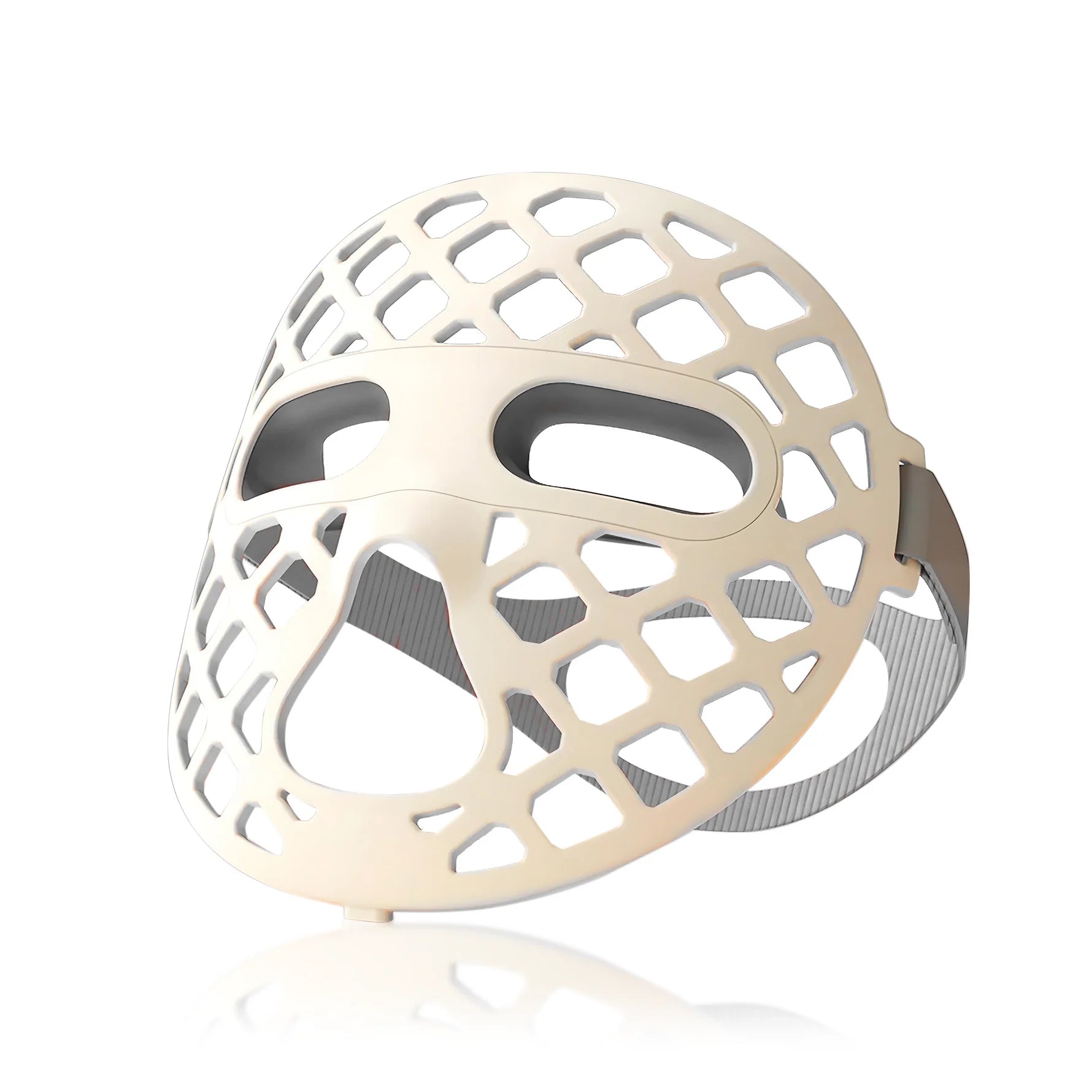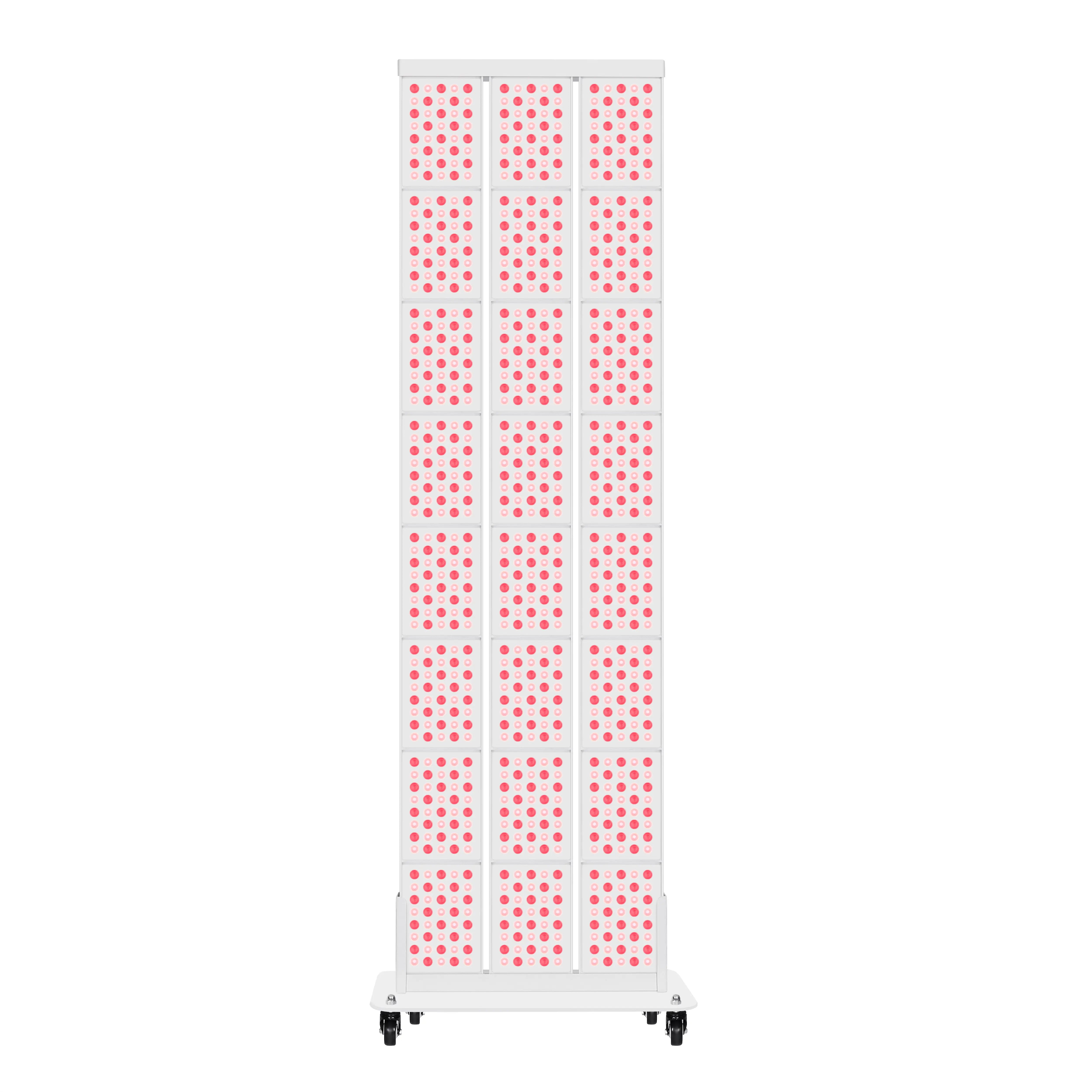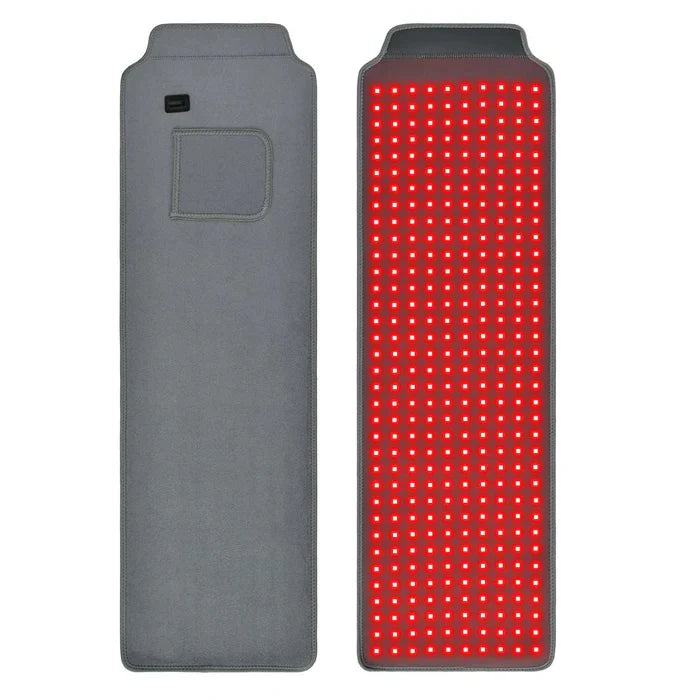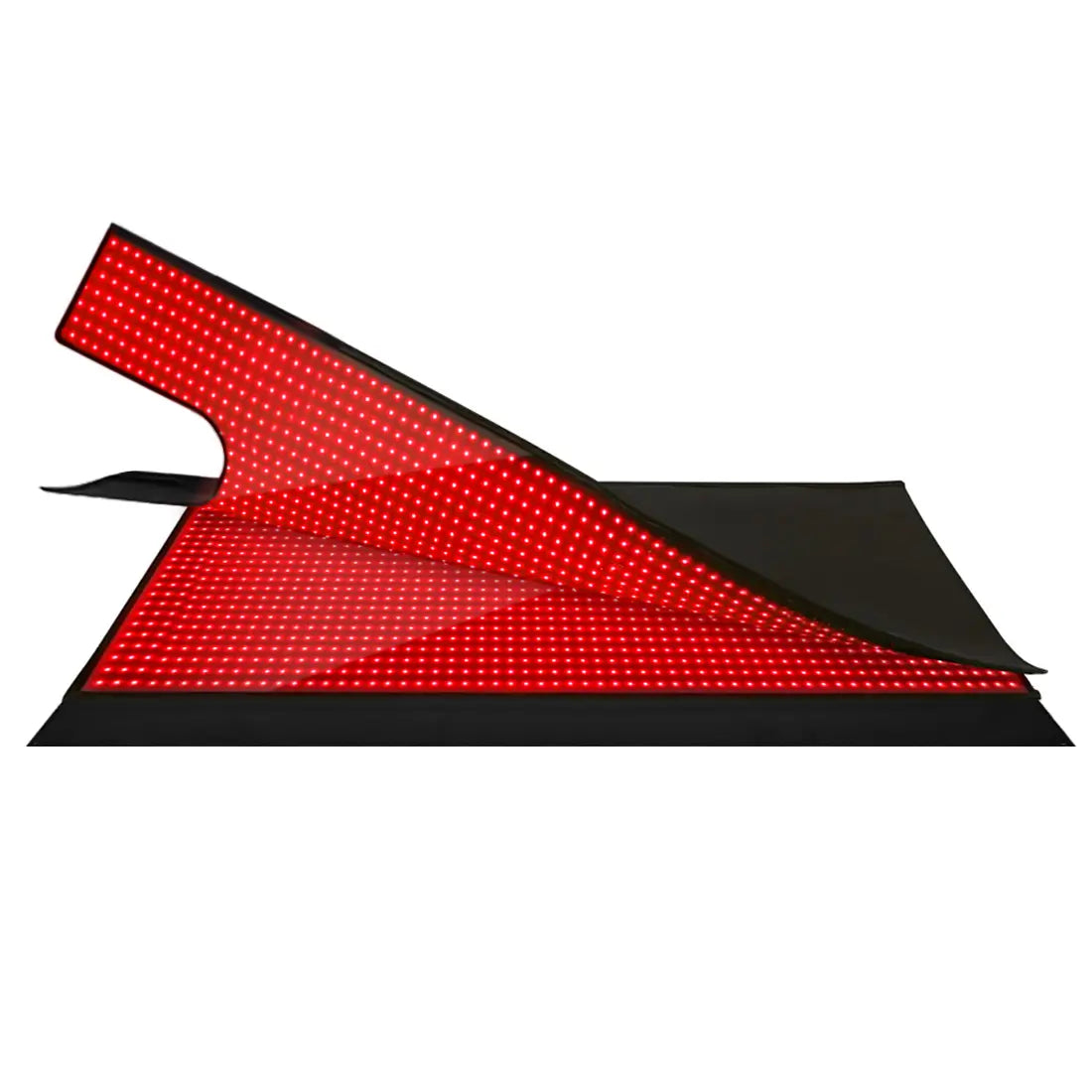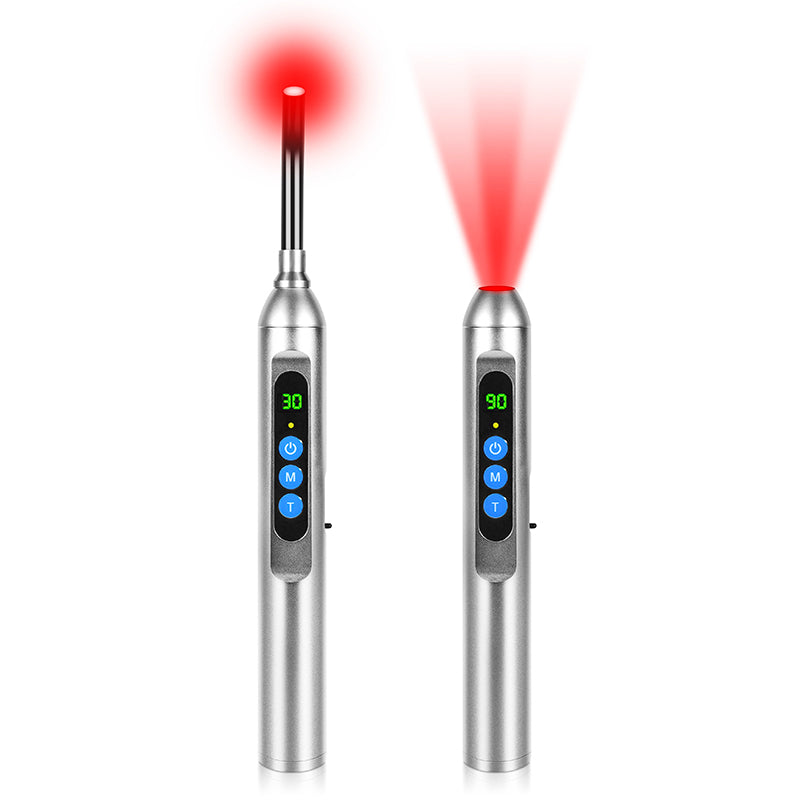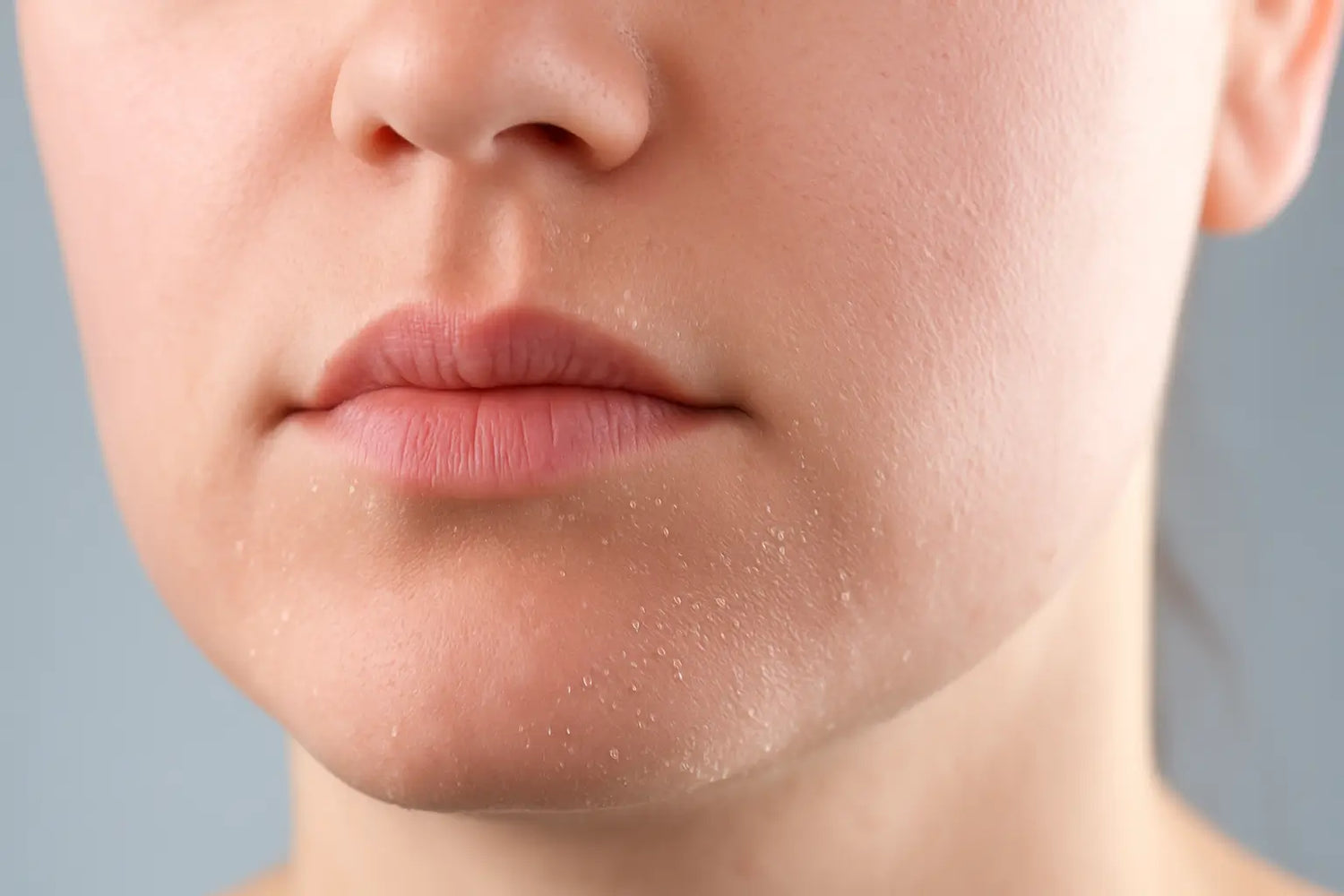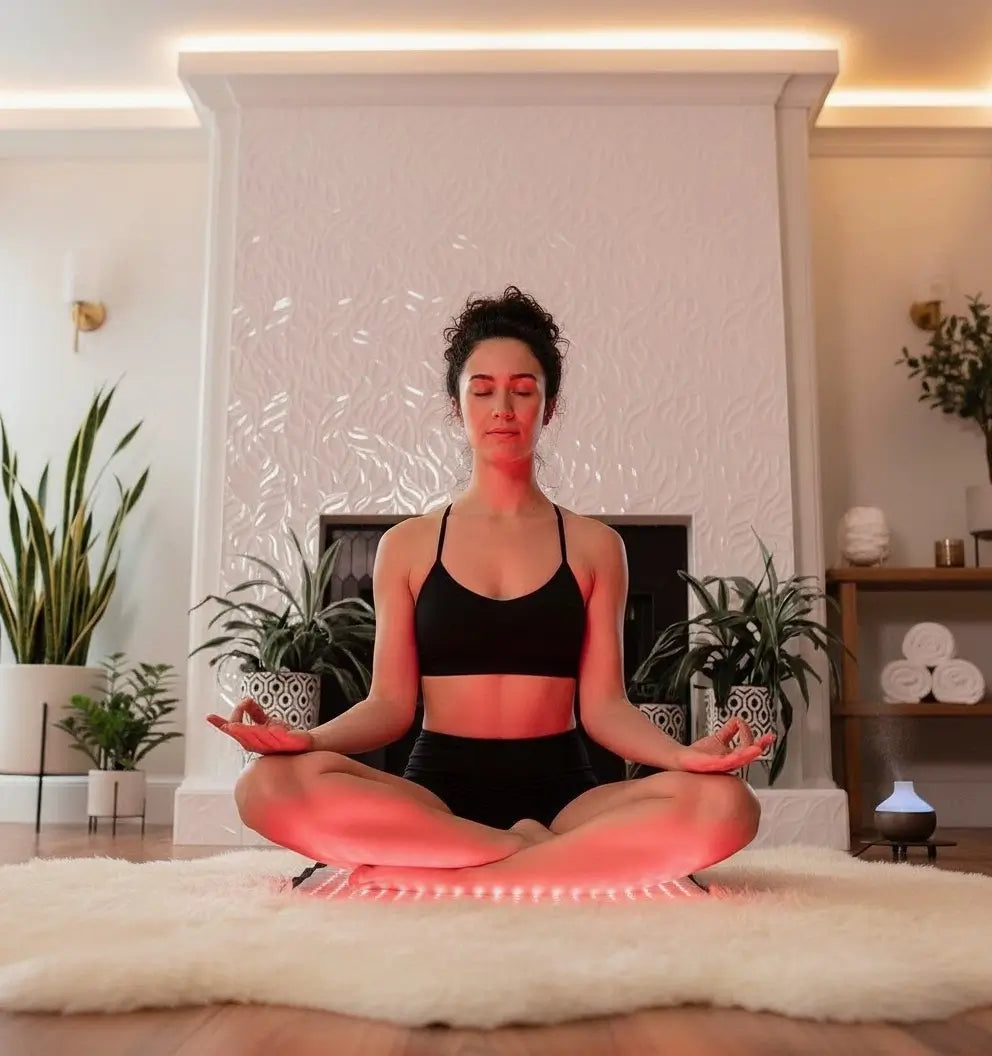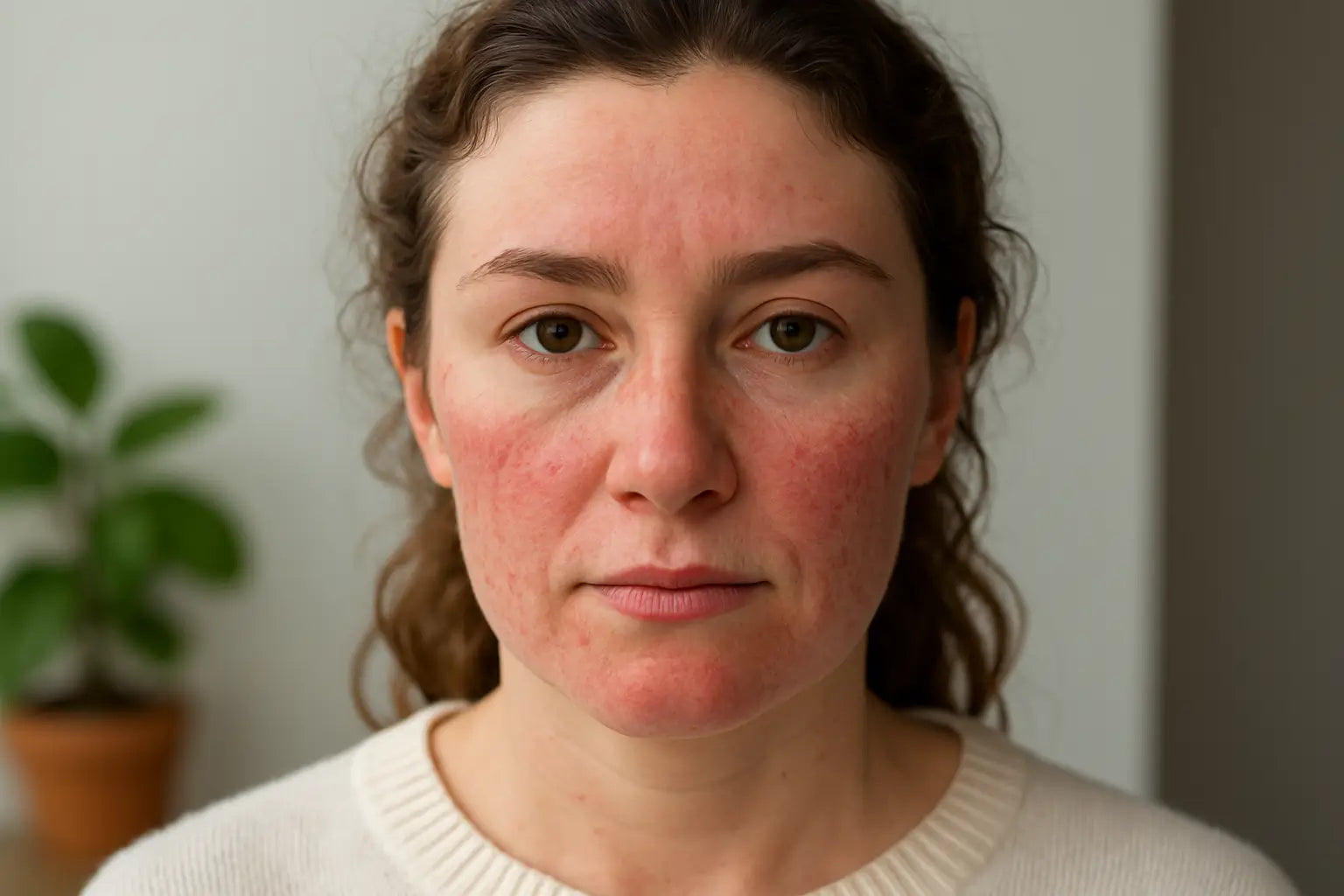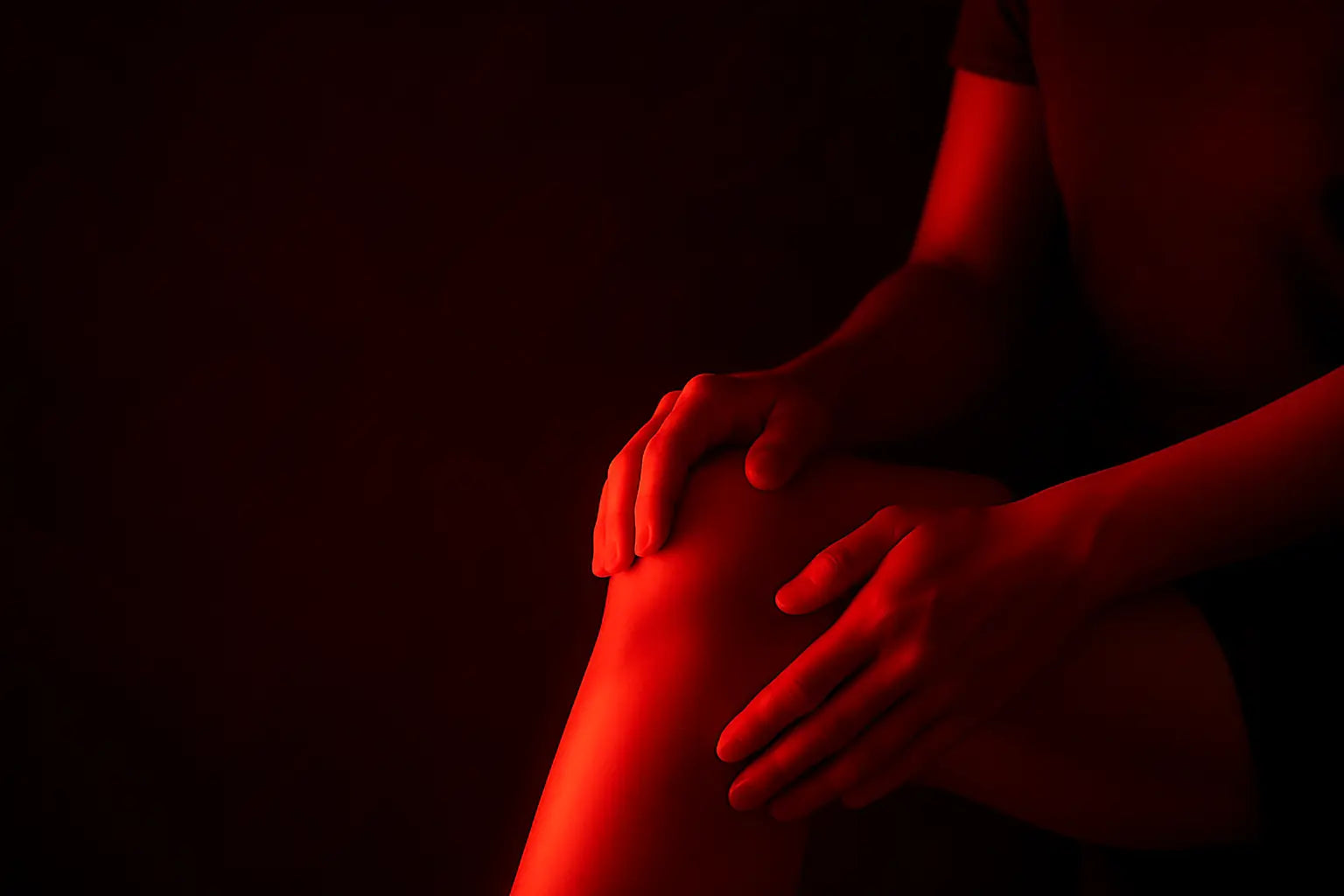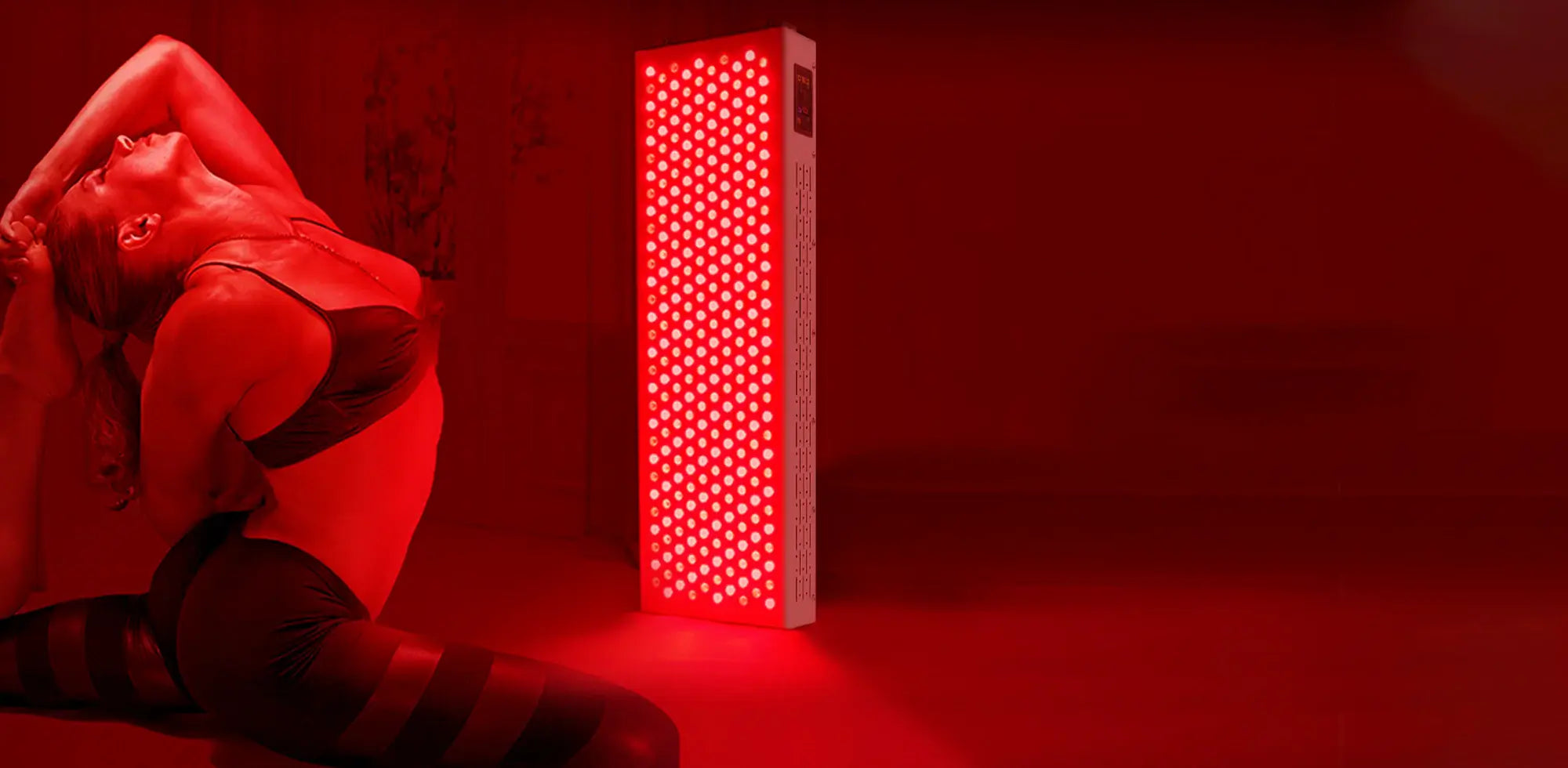Tight, flaky, or itchy skin after a shower is common. The good news is that most dryness improves with a few consistent changes at home. This article explains everyday causes and practical fixes, then shows how a red light therapy mask can support repair. If basics are solid and comfort still lags, a targeted red light therapy for dry skin routine can be a useful add-on.
What Causes Dry Skin and When to Try Red Light Therapy for Dry Skin?
Dry skin has clear, repeatable triggers. Fix the controllable ones first so results are easy to see. After the basics feel steady, decide whether a light-based step belongs in your routine.

- Why skin dries out: low humidity from cold air and indoor heating; long hot showers that remove protective oils; harsh or fragranced cleansers that irritate the surface; age-related drop in natural oil production, so dryness lingers.
- First steps that usually help: keep showers brief and lukewarm; switch to gentle, fragrance-free cleansers; apply a rich cream within minutes after washing to trap water; run a humidifier during dry seasons.
- When to add light: after two consistent weeks, consider red light therapy for dry skin; use a red light therapy mask to support repair and calm visible redness; a steady baseline makes results easier to judge and prevents over-reliance on devices.
Which Conditions Cause Dry Skin and Affect Red Light Therapy for Dry Skin?
Some diagnoses look like simple dryness yet behave differently. Knowing the difference helps set expectations for red light therapy for dry skin and guides when to seek care.
Eczema or atopic dermatitis
Often very dry and itchy with patches that can crack. Daily gentle cleansing and immediate moisturizing are essential. During flares with open skin, focus on barrier care and clinician-directed treatment first. Add a red light therapy mask later when the surface is intact and calm.
Psoriasis
Thick, psoriasis raised plaques with scale. Management usually includes prescription plans and in-clinic therapies. A home device is not a substitute for medical care. You can still keep the rest of your skin comfortable with careful moisturizing while you follow your treatment plan.
Contact dermatitis
Irritant or allergic reactions to soaps, detergents, metals, or fragrances create redness, itch, and sometimes blisters. Identify the trigger, simplify products, and protect hands when washing often. Reintroduce red light therapy for dry skin once irritation settles.
Ichthyosis
Genetic conditions that cause severe dryness and scaling. These need long-term routines and professional guidance. Devices can be considered only after a clinician confirms they fit your plan.
See a dermatologist if home steps fail, if you notice cracks with bleeding or signs of infection, or if a rash spreads quickly.
Which At-Home Steps Treat Dry Skin Before a Red Light Therapy Mask?
Moisture in, irritation down. That is the core idea. Build this routine first so any red light therapy you add has a stable base.

Daily routine that works
- Showers or baths last 5 to 10 minutes with lukewarm water.
- Use a gentle, fragrance-free cleanser on needed areas only.
- Apply a generous layer of cream or ointment within 5 minutes after washing.
- Reapply to tight spots during the day.
- Run a humidifier when the indoor air feels dry.
What to look for in moisturizers

| Ingredient | What It Supports | Best Use Case |
| Petrolatum or mineral oil | Strong seal that reduces water loss | Night routine or very dry patches |
| Ceramides | Barrier lipids that reinforce the outer layer | Daily face and body care |
| Hyaluronic acid | Water binding at the surface | Under richer creams for a plump feel |
| Glycerin | Reliable humectant for lasting comfort | Hands and body, frequent washers |
| Shea butter | Smooths rough spots | Elbows, knees, heels |
Lifestyle support that pays off
- Choose soft fabrics that glide over the skin.
- Skip strong fragrances on compromised areas.
- Keep nails short to avoid scratching damage.
- Eat a balanced diet that includes healthy fats to support the barrier from the inside.
These steps make red light therapy for dry skin easier to evaluate. With fewer irritants in the way, any improvement from light becomes clearer.
How Does a Red Light Therapy Mask Work and Is Red Light Therapy for Dry Skin Safe?
A red light therapy mask delivers visible red and near-infrared light at specific wavelengths. This light is non-ablative. It interacts with cellular energy pathways and circulation. Over time, many users report a smoother look, calmer tone, and better comfort. These changes often reflect improvements in barrier behavior and collagen dynamics.

What to expect for hydration and texture
Think of red light therapy for dry skin as support for recovery rather than a stand-alone fix. Studies on rejuvenation show gains in texture and elasticity, while hydration measurements vary by device, dose, and method. You still need diligent moisturizing and indoor humidity.
Practical how-to for consistent results
- Begin with clean, dry skin and protective eyewear if the device recommends it.
- Follow the manual for session length and frequency. Start short, then build up if the skin remains comfortable.
- Use moisturizer after the session to lock in water.
- Skip light on open cracks, oozing areas, or active infections. Resume only after the surface closes and calms.
- If you use medicines that increase light sensitivity or if you have a history of photosensitivity, ask a clinician before starting.
Who tends to benefit
- Adults with seasonal or mature-skin dryness who already follow a steady moisturizing plan.
- People in low-humidity or heated indoor environments, especially in winter.
- Individuals between eczema flares who want gentle support for a calmer look.
Used this way, a red light therapy mask fits naturally into a plan that already respects shower length, cleanser choice, and post-wash moisturizing. A home red light therapy for dry skin routine then becomes a predictable habit rather than a guess.
Red Light Therapy for Dry Skin: Next Steps
Dryness usually eases once you control humidity, shorten shower time, choose gentle cleansers, and seal in moisture right after washing. Keep that foundation steady for two to four weeks, then add red light therapy for dry skin with a quality red light mask to support repair and a calmer look. Follow the device manual, keep sessions short and regular, and pause on broken areas. Start tonight with a lukewarm routine, a rich cream, and a simple plan you can keep.
FAQs
Q1. Can retinoids or acids be used with a face mask containing red light therapy?
Yes, introduce slowly. Wear on dry, clean skin and use moisturizer afterwards. At retinoid or acid nights, use active last and forgo light if burning or stinging follows. Begin on alternate nights, patch-test combination, and choose barrier comfort at the expense of speed.
Q2. How do I know if red light therapy works for dry skin?
Check weekly with stable lighting. Photograph close-ups, provide tightness and itchiness on the scale of 0–10, and rate of return of dryness after showers. Re-check at four weeks. Don’t over-read devices; higher comfort consistency, less flaking, and smoother feel are stronger predictors of improvement.
Q3. At what time of the day and order should I incorporate my routine?
Evening suits best with most regimes. Purify, cleanse face and body, dry, apply the red light therapy mask, and finish with a rich moisturizer seal. Avoid sessions just before sweaty activities or extreme heat. Regularize days and times so that doses become routine; small, reproducible doses are best generally compared with sporadic long ones.
Q4. How do I clean and store a red light therapy mask?
Power off and allow to cool. Wipe clean surfaces with a lint-free cloth soaked with water or a gentle alcohol-free wipe, and thoroughly dry. Keep away from heat and direct sunlight in a clean, dry location. Check straps and ports monthly for good contact and safe use.
Q5. Who should avoid or consult prior to the use of red light therapy?
Do not use on broken skin, oozy dermatitis, or active infection. Consult MEDICAL ADVICE before use if photosensitizing drug treatment, photogenic migraines, seizures caused by light exposure, or if pregnant. Always use eye shields and discontinue if an unusual headache, nausea, or persistent redness occurs.


